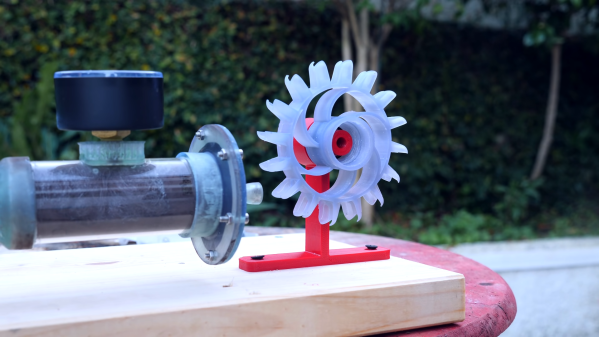Steam turbines have helped drive a large chunk of our technological development over the last century or so, and they’ll always make for interesting DIY. [Hyperspace Pirate] built a small turbine and boiler in his garage, turning fire into flowing electrons, and learning a bunch in the process.
[Hyperspace Pirate] based the turbine design on 3D printed Pelton-style turbines he had previously experimented with, but milled it from brass using a CNC router. A couple of holes had to be drilled in the side of the rotor to balance it. The shaft drives a brushless DC motor to convert the energy from the expanding steam into electricity.
To avoid the long heat times required for a conventional boiler, [Hyperspace Pirate] decided to use a flash boiler. This involves heating up high-pressure water in a thin coil of copper tube, causing the water to boil as it flows down the tube. To produce the high-pressure water feed the propane tank for the burner was also hooked up to the water tank to pressurize it, removing the need for a separate pump or compressed air source. This setup allows the turbine to start producing power within twelve seconds of lighting the burner — significantly faster than a conventional boiler.
Throughout the entire video [Hyperspace Pirate] shows his calculation for the design and tests, making for a very informative demonstration. By hooking up a variable load and Arduino to the rectified output of the motor, he was able to measure the output power and efficiency. It came out to less than 1% efficiency for turning propane into electricity, not accounting for the heat loss of the boiler. The wide gaps between the turbine and housing, as well as the lack of a converging/diverging nozzle on the input of the turbine are likely big contributing factors to the low efficiency.
Like many of his other projects, the goal was the challenge of the project, not practicality or efficiency. From a gyro-stabilized monorail, to copper ingots from algaecide and and a DIY cryocooler, he has sure done some interesting ones.
Continue reading “Small Steam Generator Creates Educational Experience”












